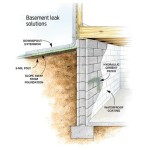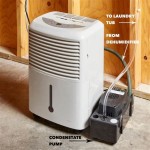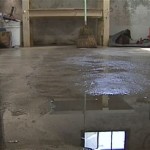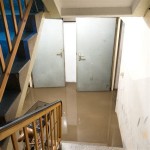Essential Aspects of Sewer Pump For Basement Bathroom
The installation of a sewer pump is a crucial consideration for homeowners with basement bathrooms, as it ensures the proper drainage of wastewater from the bathroom fixtures. This article delves into the essential aspects to consider when selecting and installing a sewer pump for a basement bathroom, empowering homeowners with the knowledge to make informed decisions.
Types of Sewer Pumps
There are two main types of sewer pumps to choose from:
- Submersible Pumps: Installed directly in the sump basin, these pumps are designed to operate while submerged in wastewater. They are ideal for deep basins and provide efficient pumping.
- Pedestal Pumps: Positioned outside the sump basin, these pumps use a suction hose to draw wastewater from the basin. They are suitable for shallower basins and offer easy maintenance access.
Pump Capacity and Head Height
The pump's capacity, measured in gallons per minute (GPM), determines the amount of wastewater it can handle. The head height, measured in feet, indicates the vertical distance the pump can lift the wastewater. Consider the flow rate of bathroom fixtures and the height of the discharge point when selecting the appropriate pump.
Sump Basin Size
The sump basin is the pit that collects wastewater before it's pumped out. Choose a basin size that can accommodate the volume of wastewater generated by the bathroom fixtures. The basin should be large enough to prevent frequent pump cycling, extending its lifespan.
Alarms and Backup Systems
Install an alarm system to alert you of any malfunctions or high water levels in the sump basin. Consider a backup pump or a battery-operated backup system to ensure uninterrupted drainage in case of power outages.
Discharge Line
The discharge line carries the wastewater away from the sump basin. Ensure that the line is properly sized and connected to prevent leaks or blockages. Avoid sharp bends or kinks in the line to maintain efficient flow.
Installation Considerations
Proper installation is essential for the optimal performance of the sewer pump. Hire a licensed plumber to ensure the pump is correctly positioned, the discharge line is properly connected, and all electrical connections meet code requirements.
Maintenance and Inspections
Regular maintenance and inspections are essential to prolong the pump's life. Inspect the pump periodically for any signs of wear or damage. Clean the sump basin and discharge line to remove debris and ensure proper drainage. Consider professional servicing every 2-3 years for optimal performance.
By understanding these essential aspects, homeowners can make informed decisions when selecting and installing a sewer pump for their basement bathroom. A properly functioning sewer pump ensures the uninterrupted drainage of wastewater, prevents flooding, and maintains a comfortable and sanitary living environment.

Everbilt 1 2 Hp Upflush System Sewage Ejector Pump Kit Sw07501tc The Home

Basement Plumbing For Ejector Pump Up To Main Sewage Line Terry Love Advice Remodel Diy Pro Pumps

Why You Have A Mini Septic Tank In Your Basement Gold Key Home Inspections

Sewage Pump Buyer S Guide How To Pick The Perfect

Everbilt 3 4 Hp Sewage Ejector Pump Ese60w Hd The Home

Sewage Sump Pump Installation Plumbing Help

What Is A Septic Ejector Pump How Does It Work The Original Plumber

Superior Pump 1 2 Hp Sewage Ejector Kit With Basin 93020u The Home

Sewage Ejector Pumps Explained Strongman

Sewage Ejector Pump Maintenance Bieg Plumbing
See Also








